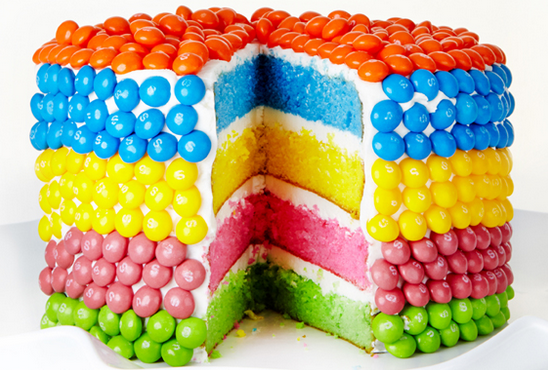I have a very sensitive daughter and through the last 3 years I have had to learn to really pay attention to what she puts in her body. I always knew food dye wasn’t great for you but have learned the reasons why they aren’t and now avoid them at all costs. Our kids have enough toxic burdens to deal with without adding in food dyes which really have no beneficial use to us and cause serious problems. They are the norm and we think we need them to make foods look attractive. Now that I know the facts behind them, when I see them they actually repulse me and all I see is toxic artificial food. Just to get you started on the right track here are specific suggestions for replacing those artificial colors with something natural.
- Red: Beets (juiced or powder)
- Orange: Carrots (juiced)
- Yellow: Saffron or turmeric
- Green: Spinach (juice or whole leaves) or liquid chorophyll
- Blue: Red cabbage boiled plus baking soda
- Purple: Red cabbage boiled
What is Wrong With Food Dye?
Here are some of the things I have learned below and wanted to share.
1.Food dye is made in a lab with chemicals derived from petroleum, a crude oil product, which also happens to be used in gasoline, diesel fuel, asphalt and tar. For some reason they are approved by the FDA to enhance the color of processed foods.
2. Food dyes have been linked to long term health problems such as cancer. The most used dyes: Red 3, Red 40, Yellow 5 and Yellow 6 are contaminated with known carcinogens. A carcinogen is a substance that is directly involved in causing cancer.
3. Other dyes including Blue 1, Red 40, Yellow 5 and Yellow 6 are known to cause allergic reactions in some people and have shown signs of causing cancer in lab animals.
4. In the UK food products containing artificial dye are required to have a warning label. The label states that the food may have an adverse effect on activity and attention in children.
- Mercola.com: “This is why if you eat a Nutri-Grain strawberry cereal bar in the United States, it will contain Red 40, Yellow 6 and Blue 1. But that same bar in the UK contains only the natural colorings beetroot red, annatto and paprika extract. In fact, the UK branches of Wal-Mart, Kraft, Coca-Cola and Mars have removed artificial colors, sodium benzoate and aspartame from their product lines as a result of consumer demand and government recommendations. In the United States, however, the Food and Drug Administration (FDA) continues to allow these toxic ingredients in countless popular foods, including those marketed directly to children.”
- CBSnews.com: Many Grocery Manufacturers Associationmembers (like Pepsi, Kraft and General Mills) “have switched to natural colorings in their products in the U.K., where warning labels are required, but they’re not doing that here for the most part. That’s because no one’s making them do it, and switching would cost a lot of money.”
5. Synthetic food dyes have been shown to cause an increase in hyperactivity in children as well as a negative impact on their ability to learn. Read article here on Food Dye and ADHD – http://www.webmd.com/add-adhd/childhood-adhd/food-dye-adhd
- Washingtonpost.com:”Artificial food dyes (in combination with a common preservative) could make even children with no known behavioral problems hyperactive and inattentive.”
- CSPInet.org: “The science shows that kids’ behavior improves when these artificial colorings are removed from their diets and worsens when they’re added to the their diets.” and “While not all children seem to be sensitive to these chemicals, it’s hard to justify their continued use in foods—especially those foods heavily marketed to young children.”
- Mercola.com: “According to scientific studies, these dyes are causing behavioral problems and disrupting children’s attention.”
6. They contribute to the obesity epidemic by attracting children and adults to highly processed food. In many cases they are being eaten instead of fresh whole foods.
- Washingtonpost.com: “Beyond the behavioral problems and cancer risks, the greatest hazard that dyes pose for children may also be the most obvious: They draw kids away from nutritious foods and toward brightly colored processed products that are high in calories but low in nutrients, such as fruit-flavored drinks and snack foods. Those types of foods are a major force in America’s obesity epidemic.”
7. They have absolutely no nutritional value while posing serious risks to our health.
8. Several new studies show that these dyes might inhibit cell respiration. You can read more: http://www.foxnews.com/health/2013/01/16/new-fear-about-food-dyes/#ixzz2cfWCEwfw
Some facts you should know about different food dyes:
Blue No.1 and Blue No. 2: Blue No.1 is used to color candy, beverages and baked goods and may cause cancer. It is banned in many countries but not the US or Canada. It is derived from petroleum distillates.
Blue No.2 is found in pet food, candy and beverages and has caused brain tumors in mice.
Red No.3 (erythrosine) is a food coloring used in cherries, baked goods and candy. It is thought to cause thyroid tumors in rats and may cause them in humans as well.
FD&C Red No. 40 is used in snack foods. It can cause tumors, lymphomas and is implicated in ADHD in children.
FD&C yellow 5 (tartrazine) is found in breakfast cereals, jams, snack foods, packaged noodles, soups and other products. This colorant may cause palpitations, hives and itching in children, restlessness, sleep disturbances, asthma and allergic reactions.v Yellow No.6 is the third most often used food coloring and is found in many products including baked goods, candy, gelatin and sausages. It has been found to cause adrenal gland and kidney tumors.





